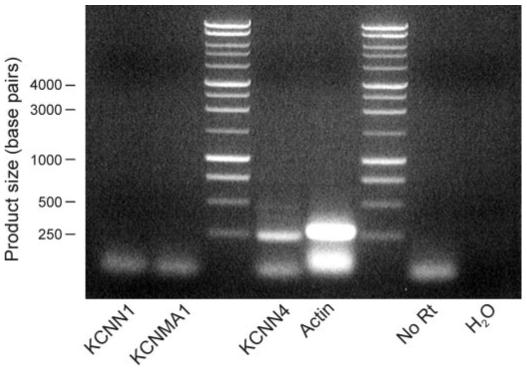Fig. 5.

Expression of mRNA encoding different K+ channel subunits. RT-PCR-based analyses (n = 4) of RNA isolated from confluent, dexamethasone-treated cells were undertaken with primers designed to amplify sequences specific to KCNN1 (small-conductance Ca2+-activated K+ channel), KCNMA1 (large-conductance Ca2+-activated K+ channel), and KCNN4 (intermediate-conductance Ca2+-activated K+ channel). In each such experiment efficacy of the amplification procedure was verified with primers specific for actin, while omission of the reverse transcriptase step (No RT) and inclusion of a water control ensured that positive results could not be attributed to contamination from genomic DNA or contamination of the reagents, respectively. All products were isolated from the gels and sequenced to verify their origin.
